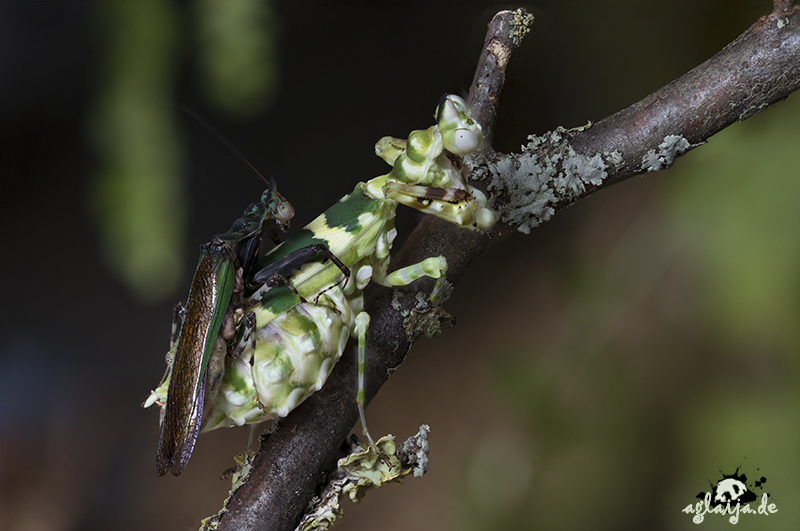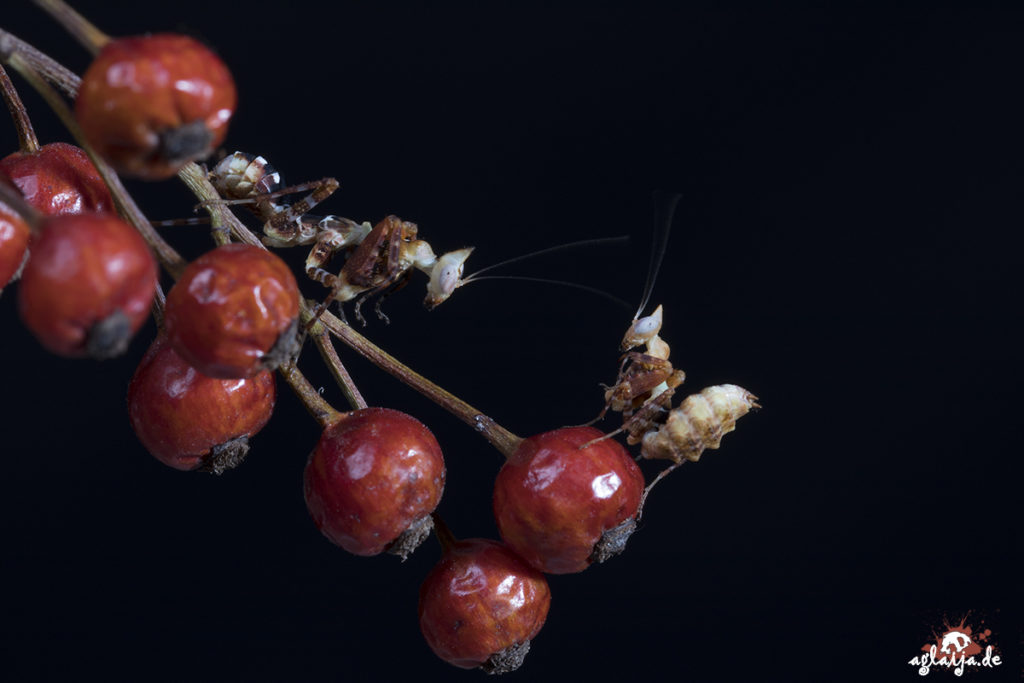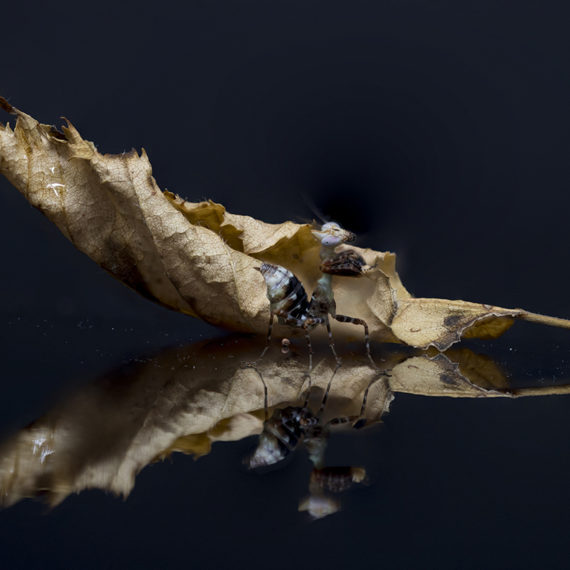Callibia diana
General
Keeping
Breeding
Available
General
Callibia diana is a beautiful but so far rarely kept and bred species of praying mantis.1
C. diana displays a symmetric median process on the vertex of the head.4 Adult females have a mostly green-white color pattern whereas males are mostly metallic green-brownish resembling more of a dead leaf.
Spreading2: Bolivia, Brazil, Colombia, Ecuador, French Guiana, Peru, Venezuela
Classification2,3: Order: Mantodea, Family: Acanthopidae, Subfamily: Acontistinae, Genus: Callibia (Stal, 1877), Species: diana (Stoll, 1813)
Size: Adult female: ca. 3 cm, Adult male: ca. 2 cm
References:
1. Avendaño J, Sarmiento CE. (2011) Allometry and ontogeny in Callibia diana Stål (Mantodea: Acanthopidae). Neotropical Entomology 40(4): 462–469.
2. Patel S, Singh R. (2016) Updated Checklist and Global Diversity of Chaeteessidae, Mantoididae, Metallyticidae, Acanthopidae, Amorphoscelididae and Sibyllidae (Mantodea: Insecta). International Journal of Research Studies in Zoology 2(4): 55-67
3. Otte, Daniel, Lauren Spearman and Martin B.D. Stiewe. Mantodea Species File Online. Version 0/5.0. [retrieval date 02.01.2019]. <http://mantodea.speciesfile.org/Common/basic/Taxa.aspx?TaxonNameID=1185578
4. Wieland F. (2010) The phylogenetic system of Mantodea (Insecta: Dictyoptera). Georg-August-Universität zu Göttingen
Keeping
The following descriptions are based on own procedures and observations and may not be generally applicable/valid.
Housing:
Adults: single-housed in at least 15x15x20 cm, currently up to 40x40x30 cm, double ventilation
Larger nymphs: group-housed (1- 3 animals) in 500 ml cup, single-housed from L5 onwards (first observed cannibalism)
Small nymphs: group-housed in 5,8 l BraPlast box (double ventilation) after hatching or group-housed (1-5 animals) in 500 ml cup
Temperature: 25 +- 3 °C
Relative humidity: 50 +- 10 % (spraying once daily)
Feeding: L1-L2: Drosophila melanogaster (small fruit fly), L3-subadult: Drosophila hydei (large fruit fly), Thermobia domestica (firebrat), Adult: Lucilia sp. (greenbottle fly) and other flying insects
Breeding
The following descriptions are based on own procedures and observations and may not be generally applicable/valid.
First copulation: 2 weeks after last molt of female, late in the afternoon
Re-matings: yes, depending on male availability
Copulation duration: several hours
Oviposition: first ootheca ~5 days after first copulation, subsequent ootheca every 16-23 days (min-max)
C. diana female seems to prefer to attach the ootheca underneath larger leaves like orchid leaves though the top of the container has been chosen alike. Few days before oviposition, the female tends to wander around in search of a fitting location. Afterwards, the female is noticed to stand over the ootheca for several days.
Ootheca: Color: yellow, Length: ~2 cm,
Form: proximal rounded area and distal long process,
Emergency area: on the same side as the substrate attachment region
Incubation: 25 +- 3 °C, relative humidity 50 +- 10 % (spraying every 2 days), good ventilation
Incubation period: 29-35 days (min-max)
Hatching number: 18-52 (min-max)
Available
currently none
Please drop me a message via the contact form or Facebook if interested.
Preferable for pickup in Munich. Shipping only within Germany; no shipping at cold or hot temperatures.














